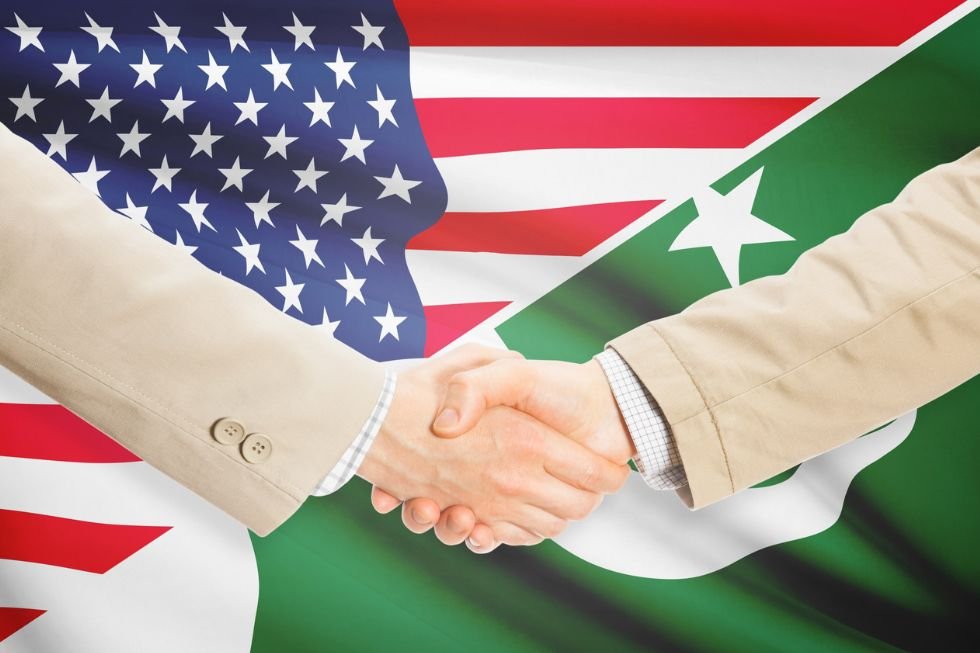As reported by the Inter Services Public Relations (ISPR), the media wing of the Pakistan Armed Forces, Pakistan Army Chief Asim Munir recently made his second visit to the United States on August 10. Munir’s first visit had included lunch with US President Trump. During the second, Munir attended a speech at the retirement ceremony for General Michael Kurilla, the outgoing commander of the US Central Command (CENTCOM).
US President Donald Trump has made a dramatic shift from previous sentiments regarding Pakistan, as he now indicates that he would like to build strong ties with the country. The US’s unwavering support of Asim Munir signals its old pattern of tilt tactics. This is a foreign policy tactic in which the US, in order to maintain geopolitical relevance, appears to favor a certain power regardless of its relationship and power dynamics with other countries.
Pakistan used this opportunity to strengthen its strategic and security cooperation with the US. However, during the second meeting, Munir allegedly issued serious threats to India, including a nuclear threat. Pakistan denied this accusation. Regardless, Munir’s visit to Washington should draw significant attention from the US public, not just from India.
What are tilt tactics?
US tilt tactics, which primarily emerged during the Nixon Administration, are driven by three key forces. First, strategic security; second, long-term strategic advantages; and third, strategic relevance to the US. While these three forces influence the tactics, one key geopolitical phenomenon underpins this strategy: strategic de-hypenation. Strategic de-hyphenation describes the phenomenon where the US tends to move away from engaging two countries directly, focusing instead on dealing with them independently based on their strategic priorities.
In the case of Pakistan, it can be said that the US is currently applying strategic de-hypenation through tilt tactics. The US first began to demonstrate tilt tactics with Pakistan before the 1970s. In 1969, the US decided to open up relations with China to counterbalance Soviet influence in the South Asian region. As part of a diplomatic strategy overseen by then-US Secretary of State Henry Kissinger, the US turned towards Pakistan to secretly facilitate talks and mediate the US–China relationship.
Declassified CIA documents suggest that Yahya Khan, the prime minister of Pakistan, facilitated messages between Washington and Beijing. In 1970, Yahya Khan visited China’s Premier Zhou Enlai and carried a message from Nixon expressing willingness for high-level talks. China responded positively, proposing a secret envoy visit, facilitated through Pakistan.
However, in strategically prioritizing Pakistan, the US chose to ignore the genocide that Pakistan committed in 1971. Known as Operation Searchlight, the Pakistan Army launched an atrocious military operation to suppress the Bengali independence movement in East Pakistan.
Previously, the US had placed an arms embargo on Pakistan in 1965. Despite this, the US secretly facilitated illegal arms transfers to Pakistan in 1970, including spare parts and ammunition through third parties like Jordan and Iran. These weapons were most likely used in Operation Searchlight. A dissent telegram sent by Consul General Archer Blood in Dhaka reported “genocide” and “moral bankruptcy” in US policy, demonstrating the extent of US awareness of the atrocities.
Tilt tactics are a power management game
Although the US maintained limited trade with India to avoid a complete zero-sum game in the region, it employed strategic de-hyphenation with tilt tactics. In other words, it maintained relations with both India and Pakistan while tilting towards Pakistan. However, the US strategic transactional posture always aims to manage power, and once it reaches a satisfactory level, it recalibrates.
This is exactly what happened with Pakistan during the 1970s. After Pakistan’s humiliating defeat in the 1971 India-Pakistan War, the US reassessed the strategic value of Pakistan. The war resulted in the creation of Bangladesh as well as the emergence of India as a major power in the South Asia region.
Overall, Pakistan was almost overlooked and abandoned when its strategic relevance began to decline. After a brief period, the US downgraded its exceptional support and strategic prioritization of Pakistan. Along with financial cuts, military assistance was also reduced and constrained under the 1965 arms embargo.
CIA assessments post-1971 focused more on Pakistan’s instability and its nuclear program, departing from pre-war intelligence and covert support. The most significant hit from the US came when the Ford Administration began pressing Pakistan’s nuclear ambitions, which were ignored during the secret talks and pre-war time. This led to sanctions under the Symington Amendment (1976), which barred the US from providing any assistance to countries that failed to comply with the International Atomic Energy Agency (IAEA). US President Jimmy Carter found Pakistan in violation of the Amendment, and thus cut off most military and economic aid by 1979.
The US has a long history of using tilt tactics
During this time, the US’s tilt and de-hyphenation tactics were not limited to one region. US involvement in Chile echoes the same strategy used with Pakistan. In 1973, the CIA, under US President Nixon’s orders, orchestrated a coup, known as Project FUBELT, against the recently elected Chilean President Salvador Allende. US strategic objectives were clear: to install a pro-US regime. It did so by installing General Augusto Pinochet, who led the coup on September 11, 1973.
The US quickly recognized Pinochet’s junta on September 24 and provided economic and military aid to consolidate his regime. Just like with Pakistan, the US demonstrated its tilt tactics when the Nixon and Ford administrations ignored Pinochet’s human rights abuses, including the executions of Americans Charles Horman and Frank Teruggi, in favor of cultivating relations with the regime.
However, as congressional investigations into CIA operations increased, the US immediately began distancing itself from Pinochet. The US backed the “No” campaign in Chile, which culminated in a 1988 plebiscite referendum that rejected Pinochet’s rule. Pinochet’s strategic utility diminished, and the US endorsed the democratic election of Patricio Aylwin in 1989.
The US is now re-embracing Pakistan
Similarly, the US has continually used tilt tactics to manage the power balance in the Middle East. The US demonstrated tilt tactics and de-hyphenation during the 1973 Yom Kippur War, in which it tilted towards Israel and away from Saudi Arabia. However, as recently as February 2025, the US and Saudi Arabia have strengthened ties — the US views Saudi Arabia as a strategic investment in the engagement with Russia. The US is no stranger to rapid shifts in tilt tactics to gain footholds in the Middle East.
Such is the case with the recent strategic embrace of Pakistan by the US. In its desperation to gain a strategic edge over Iran and establish its power in the Middle East, the US views Pakistan as a viable option for strategic security cooperation.
Declassified CIA documents, such as a 1985 report on Iran’s military capabilities, highlight Pakistan’s historic role in monitoring and countering Iranian-backed groups due to its proximity to Iran. In many cases, Pakistan provided direct signal intelligence (SIGINT) and human intelligence (HUMINT). A 2008 CIA assessment emphasized Pakistan’s intelligence-sharing on Iran’s Quds Force activities in Herat, Afghanistan, near the Iran-Pakistan border. Recently, the US has turned its focus on Pakistan’s Baluchistan province, adjacent to Iran’s Sistan-Baluchestan, to combat insurgent activity.
As tensions between Israel and Iran rise, it has become essential for the US to monitor Iran, especially its Shia militant proxies. This is where Pakistan can be instrumental in providing the US with a broader set of intelligence. Pakistan offers a range of options to counter Iran, not only from a security perspective but also from strategic, political and ideological perspectives.
Pakistan’s status as a predominantly Sunni Muslim state can be used to counter Iran’s efforts to regulate Shia militants and sentiments. The US has long sought a strategy to counter Iran’s Shia theocracy by aligning with Sunni-majority states, particularly after the 1979 Iranian Revolution.
CIA declassified reports suggest that during the 1980s, the US supported Pakistan’s Islamization policies under Zia-ul-Haq to curb Iran’s ideological reach in South Asia and the Middle East. For example, in 1979, Pakistan’s backing of Sunni jihadi groups — known as mujahideen — in Afghanistan limited Iran’s influence over Shia groups.
In the current scenario, the US views Pakistan as a strategic partner in establishing peace between Israel and Iran, as well as preventing Iran from developing nuclear weaponry. This backchannel politics mirrors Pakistan’s facilitation of talks between the US and China in 1969. Clearly, the US values Pakistan for its neutrality and access to Tehran, hence the revival of its tilt tactics.
As Pakistan is reorganizing its strategic relevance with the US, India must be non-reactive and focus on its strategic rise. Prime Minister Modi has already emphasized “equi-closeness,” or the policy of being equally close to all powers in order to explore opportunities. This multipolar maneuver can control the US’s tilt and keep the situation in the region stable. After all, history suggests that this tilt pattern is temporary. However, India must monitor the larger security and strategic interests that Pakistan may attempt to exploit during the US’s power management game in South Asia.
[Cheyenne Torres edited this piece.]
The views expressed in this article are the author’s own and do not necessarily reflect Fair Observer’s editorial policy.
Support Fair Observer
We rely on your support for our independence, diversity and quality.
For more than 10 years, Fair Observer has been free, fair and independent. No billionaire owns us, no advertisers control us. We are a reader-supported nonprofit. Unlike many other publications, we keep our content free for readers regardless of where they live or whether they can afford to pay. We have no paywalls and no ads.
In the post-truth era of fake news, echo chambers and filter bubbles, we publish a plurality of perspectives from around the world. Anyone can publish with us, but everyone goes through a rigorous editorial process. So, you get fact-checked, well-reasoned content instead of noise.
We publish 3,000+ voices from 90+ countries. We also conduct education and training programs
on subjects ranging from digital media and journalism to writing and critical thinking. This
doesn’t come cheap. Servers, editors, trainers and web developers cost
money.
Please consider supporting us on a regular basis as a recurring donor or a
sustaining member.
Will you support FO’s journalism?
We rely on your support for our independence, diversity and quality.










Comment